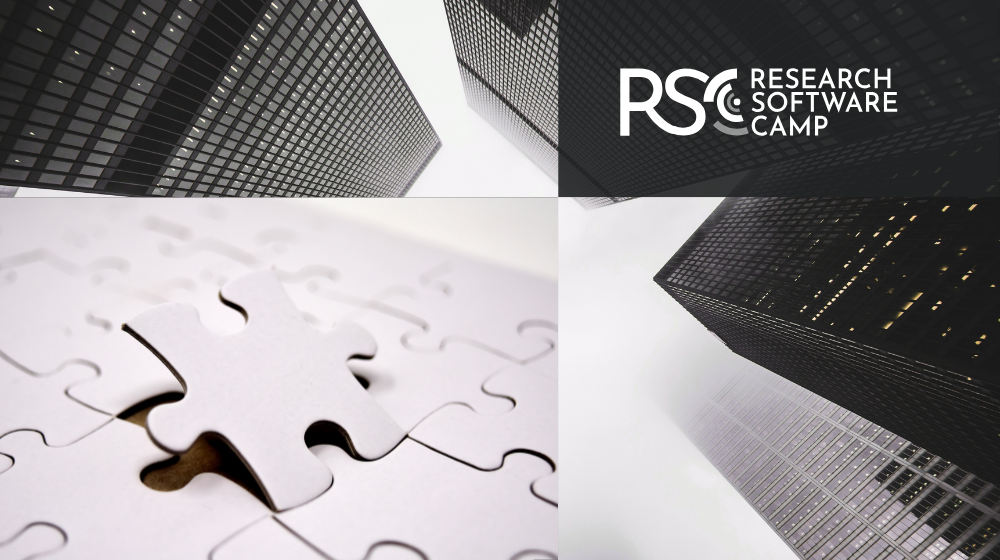This blog is part of the Research Software Camp: Careers and Skills in Research Software series.
Effective outreach is key to growing and diversifying the scientific computing community, engaging everyone from students and researchers to policymakers and the public. Yet, many organisations struggle to build or sustain outreach programmes, especially without dedicated staff or resources.
At the 2025 SSI Research Software Camps, we ran a session designed to ease those challenges by showcasing practical ways to reuse, repurpose and reinvent existing outreach materials. The idea is simple: instead of reinventing the wheel time and time again, let’s use existing materials as the baseline for our own outreach activities.
We defined three scenarios when using existing materials:
- Reuse: In the most straightforward case, we may be able to take an existing activity and use it again, largely as it was originally designed or with only minor adjustments. This works well when your new use has a similar audience or a similar setting. The “reuser” has a very low barrier to getting started! They just need to know enough about the activity, key concepts and gather the materials to get started with ease.
- Repurpose: Often, different organisations will need to outreach to different audiences, in different settings or for a different purpose. In this case, an existing outreach activity can be adapted to accommodate these differences. This may require moderate levels of change, with the goal of ensuring that the material remains relevant and engaging in the new context. In this manner, we can extend the life of outreach activities and enable new centres to tailor their activities to meet their specific needs.
- Reinvent: In other cases, organisations may find they need to communicate an entirely different learning objective or idea. But, this doesn’t mean they need to start from scratch! An existing outreach activity can be used as the basis for a new one, using the materials to inspire and create a new activity from a foundation that is proven to work. This approach offers space for creativity and new ideas, while circumventing the need to start from a blank page.
Each of these approaches requires care and attention to important factors, such as accessibility, communication style, and audience background knowledge, to ensure effective and impactful outreach. This workshop equipped participants with a ready-to-use strategy, lowering the barrier to enable those new to outreach to take existing materials and adapt them to their own contexts.
We did this by featuring three invited speakers to present three successful outreach activities:
- Karina Pesatova’s activity challenges participants to “Beat the AI” by seeing who can find the hidden key in a busy image fastest. This activity is part of a workshop for school groups, but has also been used at science fairs.
- Darren White introduced a Parallel Sorting activity, where participants are timed to sort objects into different categories. Over the course of a science fair, this produces a graph demonstrating parallel speed up!
- Will Furnell acted as a robot being instructed to “Plant-Me-A-Plant”, only taking instructions literally to demonstrate the basics of computer algorithms. This messy activity is fun, fast and engaging for young children.
Fired up by these presentations, the workshop participants then split into breakout groups to discuss how the presented activities can be reused, repurposed and reinvented.
All three of the activities were very easy to reuse, low-cost, and easily adaptable to materials that most centres will already have access to. This extended into discussions around accessibility, where participants reflected on how activities could be reused in areas of the world where certain infrastructure or material is not available. Their fun and interactive nature means they appeal to a wide range of ages - especially the “Where’s Wally?”-style Beat the AI, which adds a nostalgic element.
When discussing repurposing, each activity was found to be very flexible in terms of how much technical depth can be introduced. Explanations can be extended to include more complex concepts where appropriate, making them suitable for repurposing across diverse audiences. For example, Parallel Sort can grow from a simple demonstration of speed-up to exploring ideas like bottlenecks, load balancing and race conditions. Importantly, none of the activities require participants to have a technical background to enjoy and understand them. This makes them accessible and inclusive entry points into scientific computing.
That said, some activities presented challenges when repurposing them for older audiences. For example, Plant-Me-A-Plant works beautifully with younger groups as they all shout over each other and excitedly make a mess! However, this can be less relatable for adults or specialists. Instead, participants suggested using more detailed tasks (like baking a cake or drawing a cat) or detailed instructions to demonstrate the same learning objective. Perhaps working in pairs, with one member blindfolded and the other giving instructions.
The reinvent discussions proved especially creative. For Plant-Me-A-Plant, ideas included integrating testing and debugging phases or introducing AI-generated content as a discussion point for reliability and bias in technology. Beat the AI could be used to access researchers in a broader set of areas by using pictures with medical imaging or astronomy, or even to teach how searching algorithms work. And the Parallel Sort could be used to demonstrate data handling or fault tolerance by removing a player halfway through.
Upon reflection, this format provided a useful framework to discuss the sustainability of outreach materials in different contexts. However, separating the discussions into reuse, repurpose and reinvent was challenging! These areas often overlapped in practice, making it more effective to explore each activity through specific scenarios rather than stick strictly to each topic.
This session was organised in collaboration with Computational Abilities Knowledge Exchange (CAKE) and members of the SocRSE EDIA Working Group. We encourage readers to explore and engage with these communities to further support knowledge exchange initiatives and sustainable outreach.


